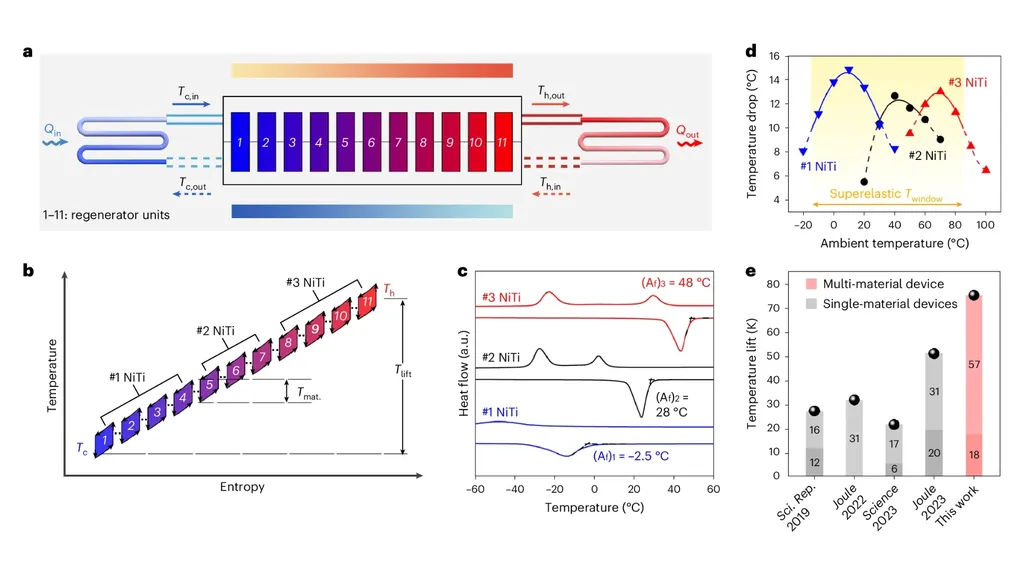In the quest for more efficient and sustainable cooling technologies, a team of researchers led by King Yin Ho from the JC STEM Lab of Energy and Materials Physics at the City University of Hong Kong has made significant strides in the development of magnetocaloric materials (MCMs). Their work, published in the journal MetalMat (translated as “Metal Materials”), focuses on Fe2P-type materials, which show great promise for magnetocaloric cooling—a technology that could revolutionize the energy sector.
Magnetocaloric cooling harnesses the magnetocaloric effect, where certain materials change temperature under a changing magnetic field. This solid-state cooling method is highly efficient and environmentally friendly, making it an attractive alternative to traditional vapor-compression cooling systems. Among the various MCMs, (Mn,Fe)2(P,Si)-based materials stand out due to their giant magnetocaloric effect (GMCE), non-critical components, and tunable Curie temperature around room temperature.
The research team has been diligently working to optimize the performance of these materials. “We have been exploring different strategies to enhance the GMCE, tune the Curie temperature, and reduce thermal hysteresis,” explains Ho. These strategies include doping with various elements, improving microstructures, and developing practical manufacturing techniques.
One of the key challenges in this field is bridging the gap between fundamental research and practical applications. The team’s review highlights the latest efforts in material engineering and suggests promising approaches to boost the development of these materials. Notably, they emphasize the potential of machine learning in identifying the optimal composition and structure of (Mn,Fe)2(P,Si)-based MCMs.
The implications of this research are significant for the energy sector. As the world moves towards more sustainable and energy-efficient technologies, magnetocaloric cooling could play a crucial role. The development of high-performance MCMs could lead to more efficient refrigeration systems, reducing energy consumption and greenhouse gas emissions.
“The potential applications of these materials are vast,” says Ho. “From domestic refrigerators to industrial cooling systems, the impact could be profound.”
As the research community continues to explore and refine these materials, the future of magnetocaloric cooling looks increasingly promising. With the insights and innovations presented in this review, the journey towards practical, large-scale applications of magnetocaloric cooling is one step closer to reality. The work published in MetalMat serves as a testament to the ongoing efforts and the bright future of this transformative technology.

